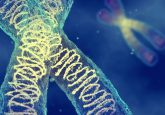Novel microarray-based method for examining single leukemia cells could improve treatment

Researchers from the KTH Royal Institute of Technology (Stockholm, Sweden) have developed a low-cost method termed MASC-seq that enables microarray-based barcoding of gene expression patterns in individual leukemia cells. Utilizing this system could improve treatment of chronic lymphocytic leukemia (CLL) by providing critical insights into disease development.
The study, recently published in Nature Communications, demonstrates the capacity of the new system to provide qualitative information on cell morphology and to profile the expression of thousands of single cells daily, which is far more rapid than current standard procedures and without the limitation of cell size.
Additionally this method is the first system to utilize solid-surface complementarity DNA synthesis of single cells, reducing the chances of technical variations in library preparation.
“We found that CLL cells do not consist of a single cell type, but of a number of sub-clones that exhibit entirely different gene expression,” commented author Joakim Lundeberg (KTH Royal Institute of Technology).
“With this new, highly cost-effective technology, we can now get a whole new view of this complexity within the blood cancer sample. Molecular resolution of single cells is likely to become a more widely-used therapy option,” Lundeberg continued.
Utilizing this novel microarray-based method, individual cells are characterized within a bespoke glass matrix and using transcriptome analysis of RNA molecules in conjunction with sequencing software, clinicians can observe which genes are active and cells in which a specific RNA molecule is active can be located.
Therefore, the MASC-seq system has the capacity to accelerate the study of subtle clonal dynamics and assist in providing critical insights into disease development and other biological processes.
Sources: Vickovic S, Ståhl PL, Salmén F et al. Massive and parallel expression profiling using microarrayed single-cell sequencing. Nat. Commun. DOI: 10.1038/NCOMMS13182 (2016) (Epub ahead of print); KTH Royal Institute of Technology press release




